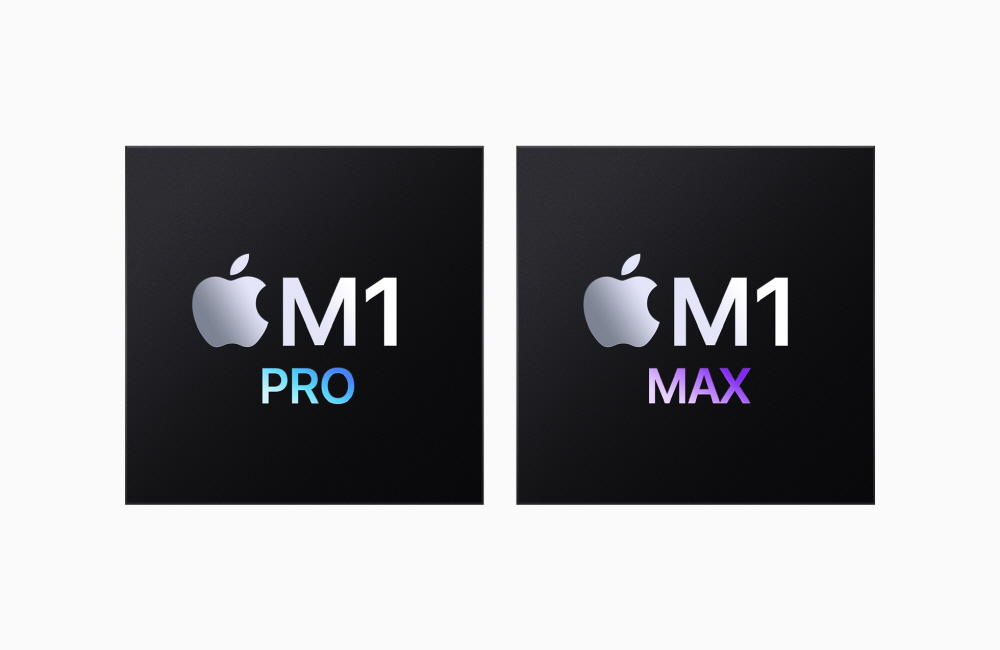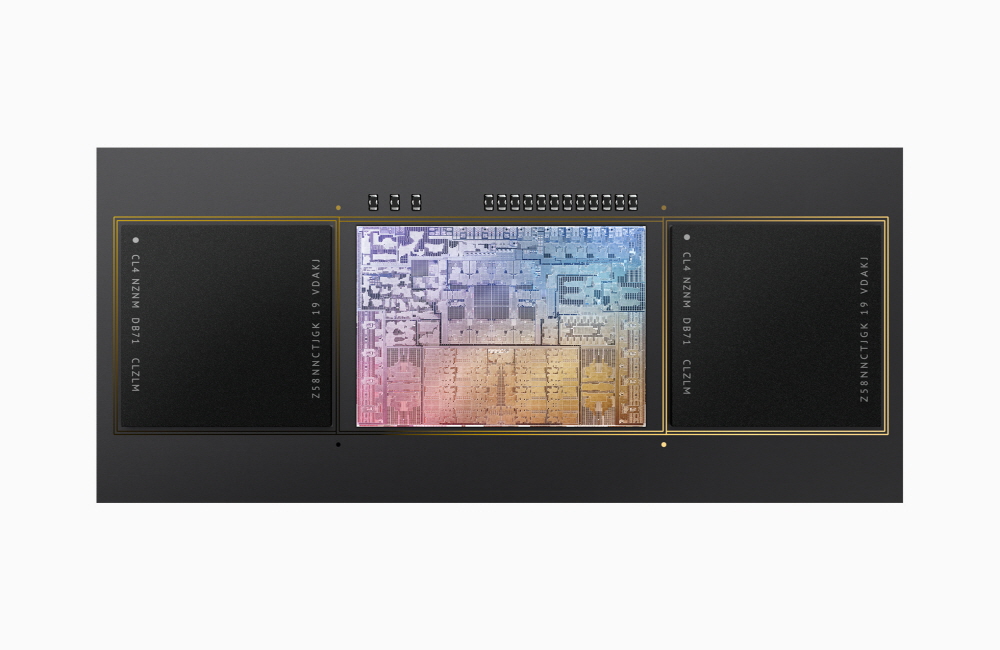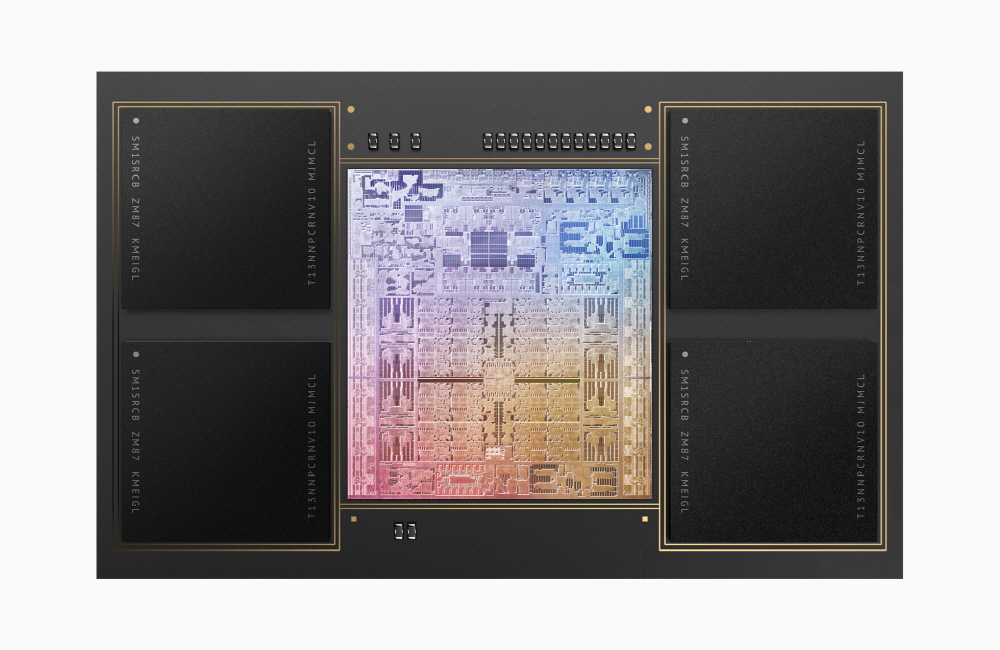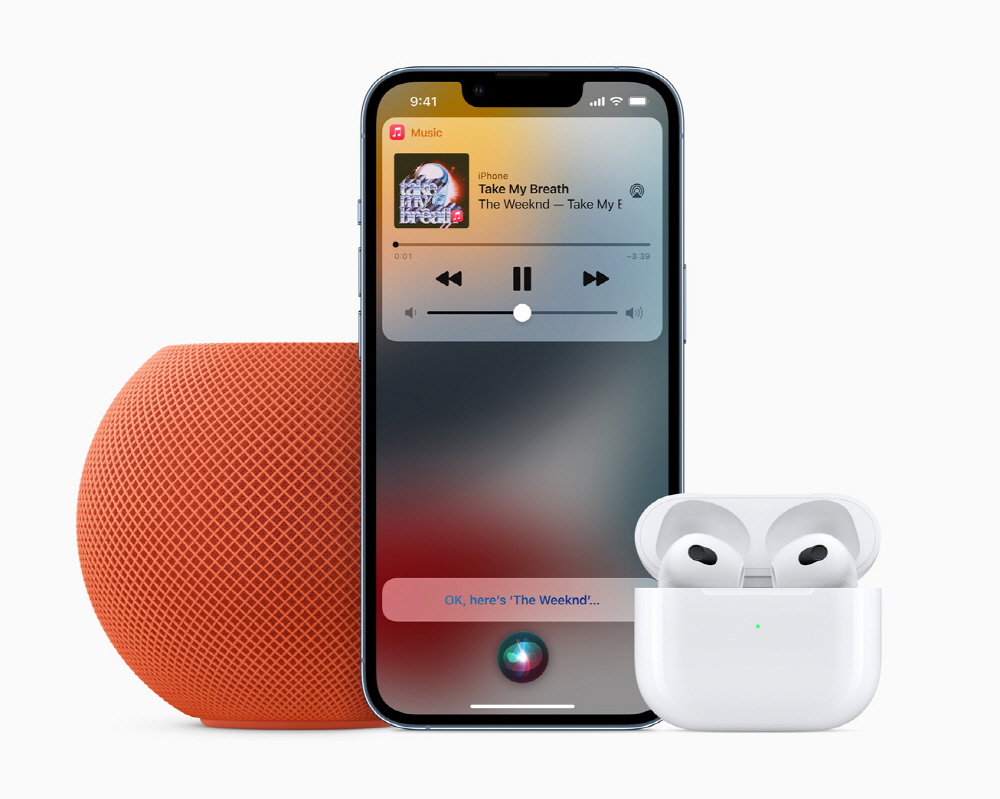
On October 19, Japan time, Apple held a special event titled “Power Deployment” and announced the new Macbook Pro, third-generation AirPods, new colors for the HomePod mini, and more.
The most eye-catching is the new MacBook Pro equipped with Apple Silicon M1 Pro and M1 Max. These two chips are a much more powerful extension of the M1 architecture and are intended for the next-generation MacBook Pro. The CPU is equipped with up to 8 high-performance cores and 2 high-efficiency cores. The M1 Pro comes in two types: 8-core and 10-core. The M1 chips were all 8 cores, but the Pro has the same number of cores in the sub-configuration, but is more focused on high performance.

The power compared to the high CPU performance that paid attention to the M1 chip also continued to the M1 Pro and M1 Max, showing performance comparable to the highest level of a Windows chip at 1.7 times and 70% less power than the latest 8-core Windows notebook chip. claiming to do so.

In addition, Apple Silicon Mac integrated CPU and GPU by applying SoC. Through this, high performance and low power were realized, and an external GPU could not be used, but the M1 Pro and Max are appealing to strengthen this as well. The M1 Pro delivers peak performance at 70% less power than a Windows laptop with a discrete GPU, and the M1 Max delivers high peak performance at 40% less power than a compact professional Windows laptop with a high-performance discrete GPU. . However, it did not mention the specific manufacturer and product of the external GPU or Windows laptop.
The RAM capacity, which was limited to a maximum of 16GB for the M1, has been increased to 32GB for the M1 Pro and 64GB for the M1 Max. The memory bandwidth of the M1 Pro is also up to 200 GB/sec, which is three times that of the M1 chip. In the case of the M1 Max, up to 400 GB/sec, twice that of the Pro.
If you look at the M1 Pro specifications posted on the official site, in addition to the memory bandwidth of 200GB/sec, the integrated memory up to 32GB, ProRes support, twice as many transistors as the M1, and 70% faster than the M1. The maximum CPU core is 10, the maximum GPU core is 16, and the Neural Engine 16 core, Thunderbolt 4 3 terminals, and external display support up to 2 external displays.
Looking at the M1 Max specifications, the memory bandwidth is 400 GB/sec, the number of GPU cores is 32, the number of transistors is 57 billion, and the integrated memory is up to 64 GB. Maximum power consumption reduction 70%, ProRes support, Neural Engine 16 cores, Thunderbolt 4 3 ports, and up to 4 external displays are supported.

The product with these chips on top is the new MacBook Pro. There are two screen sizes, 14-inch and 16-inch, of which 14-inch is actually a successor to the previous 13-inch model. The chips are M1 Pro and M1 Max.
The maximum CPU configuration is 10, including 8 high-performance cores and 2 high-efficiency cores. Up to 64GB of RAM can be installed, and like the M1 Mac, it has a memory bandwidth of 200 to 400GB/sec by adopting the integrated memory architecture UMA.
It is high-performance, but also emphasizes power-saving. Compile up to 4x code using Xcode on a single charge and edit images up to 2x longer in Lightroom Classic. The 14-inch model can play up to 17 hours, and the 16-inch model can play up to 21 hours.
The design has also been completely overhauled. For the first time in a MacBook product, a Liquid Retina XDR display using a mini LED backlight was adopted. It supports up to 120Hz ProMotion variable refresh rate, and has a brightness of 1,000 nits and a luminance of 1,600 nits.
A 1080p FaceTime HD camera was installed in the notch, and it was equipped with a MagSafe charging terminal fixed with magnets, an SD card slot, an HDMI terminal, and 3 Thunderbolt 4 terminals. Meanwhile, the Touch Bar has been eliminated and physical function keys have been placed in their place.
The existing M1 MacBook Pro only had one external display that could be connected, but that number has been increased to two or more. Models with M1 Max can connect up to 3 Pro Display XDRs and 1 4K TV, and M1 Pro models can connect up to 2 Pro Display XDRs. It also supports up to 20 streams of 4K ProRes video playback.
Apple will also start delivering the new version of macOS, macOS Monterey, on October 26th. MacOS Monterrey is trying to refresh FaceTime, such as spatial audio support and the ability to watch videos with friends remotely using Share Play.
The most eye-catching is the universal control. This feature allows users to seamlessly switch between iPad and Mac. You can also drag and drop files between the iPad and Mac, or type text from the Mac keyboard to the iPad. However, Share Play and Universal Control are expected to start shipping this fall. This means that at the time of release, it cannot be used immediately.
It also significantly overhauled the Safari browser and made it possible to configure tab groups. A function to read the text in the image file in the operating system standard was also added. There are also new iOS 15 features, such as a focused mode that suppresses unnecessary notifications and the ability to keep track of what you’ve shared in the Messages app.

Apple also announced a new model of wireless earphone AirPods at this event. As for the third-generation model, the new AirPods have changed both the internal and external design. It supports spatial audio in a style close to AirPods Pro. Spatial Audio for Dolby Atmos and more also supports head tracking, so you can hear the sound from the right direction even when you move your head.
It is resistant to sweat and rain with IPX4 specifications, and the battery life is 6 hours, and with a case, it can be played for 30 hours. The driver unit is also equipped with new features such as Adaptive EQ, which has a new design and improved sound quality. Adaptive EQ is an equalizer that corrects mid-bass sounds in real time according to different ear shapes and wearing conditions for each user, and searches through the built-in microphone. In addition, it supports the AAC-ELD codec with excellent sound reproducibility to improve the voice quality when making a facetime call.
In addition to the versatile Qi method, the case can also be charged with the new wireless charging method, MagSafe. Lightning is supported by wired connection, and a USB-C conversion cable is also included. The price is 179 dollars. The difference with the higher model AirPods Pro is that it does not support active noise cancellation.

Meanwhile, Apple added yellow, blue, and orange three colors to the smart speaker HomePod Mini. This is not to add functions or change specifications, but to increase the degree of freedom in color coordination according to the usage environment.

Apple also announced a new Apple Music plan, the Voice Plan. This plan allows you to select and play the optimal playlist when you request a dinner party or a break before bed through Siri.
In addition to selecting and listening to songs such as artist albums and singles, as in the past, Apple Music can be used through Siri. The voice plan eliminates the screen tap intervention from these existing plans, and is specialized for Siri and cheaper. For example, if the reason you use Apple Music is mainly to play it on a HomePod, a voice plan may be the best choice. The voice plan is priced at $4.99 per month and will be available this fall in 17 countries worldwide. Related information can be found here.


















Add comment